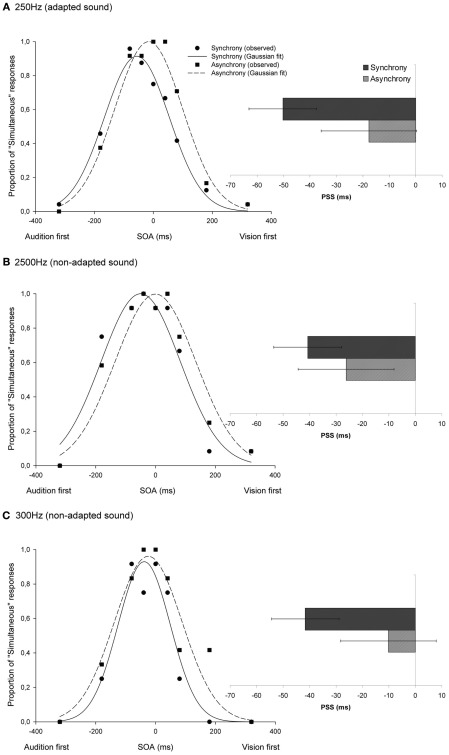Figure 2.
Temporal recalibration effects seen in audiovisual SJs including beeps of 250, 2500, and 300 Hz [shown in (A–C), respectively]. The proportion of “simultaneous” responses across the different SOAs was fitted with a Gaussian function. The graph shows the observed and fitted data from one of the participants in the experiment. The bar graph shows the point of subjective simultaneity (PSS) group average for synchrony and asynchrony conditions, including data (mean and standard error) from all of the participants. When audiovisual stimuli were presented asynchronously during the exposure phase, a temporal shift was observed (see dashed lines), in the PSS, toward the direction of the asynchrony (vision-first), and regardless of the sound being tested. The sensitivity to physical synchrony decreased (i.e., the SD increased) as a result of exposure to asynchrony.

